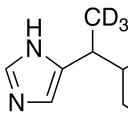The medicinal plant Andrographis paniculata genome provides insight into biosynthesis of the bioactive diterpenoid neoandrographolide.
Fjalë kyçe
Abstrakt
Andrographis paniculata is a herbaceous dicot plant widely used for its anti-inflammatory and anti-viral properties across its distribution in China, India and other Southeast Asia countries. A. paniculata was used as a crucial therapeutic treatment during the influenza epidemic of 1919 in India and is still used for the treatment of infectious disease in China. A. paniculata produces large quantities of the anti-inflammatory diterpenoid lactones andrographolide, neoandrographolide and their analogs; touted to be the next generation of natural anti-inflammatory medicines for lung diseases, hepatitis, neurodegenerative disorders, autoimmune disorders and inflammatory skin diseases. Here, we report a chromosome-scale A. paniculata genome sequence of 269 Mb that was assembled by Illumina short reads, PacBio long reads and Hi-C data. Gene annotation predicted 25,428 protein-coding genes. To decipher the genetic underpinning of diterpenoid biosynthesis, transcriptome data from seedlings elicited with methyl jasmonate also was obtained, which enabled identification of genes encoding diterpenoid synthases, cytochrome P450 monooxygenases, 2-oxoglutarate-dependent dioxygenases and UDP-dependent glycosyltransferases potentially involved in diterpenoid lactone biosynthesis. We further carried out functional characterization of pairs of classes I and II diterpene synthases, revealing the ability to produce diversified labdane-related diterpene scaffolds. In addition, a glycosyltransferase able to catalyze O-linked glucosylation of andrograpanin, yielding the major active product neoandrographolide, was identified as well. Thus, our results demonstrate the utility of the combined genomic and transcriptomic dataset generated here for investigation of the production of the bioactive diterpenoid lactone constituents of the important medicinal herb A. paniculata. This article is protected by copyright. All rights reserved.



